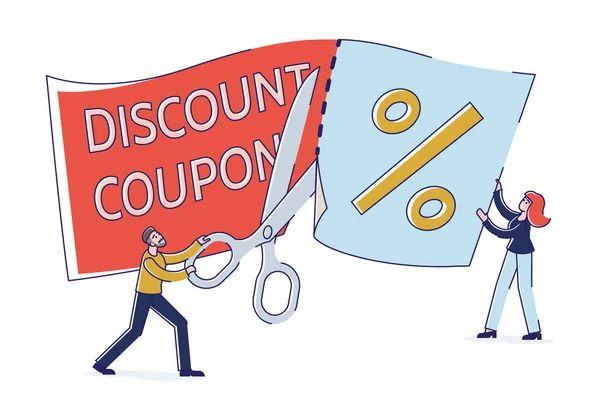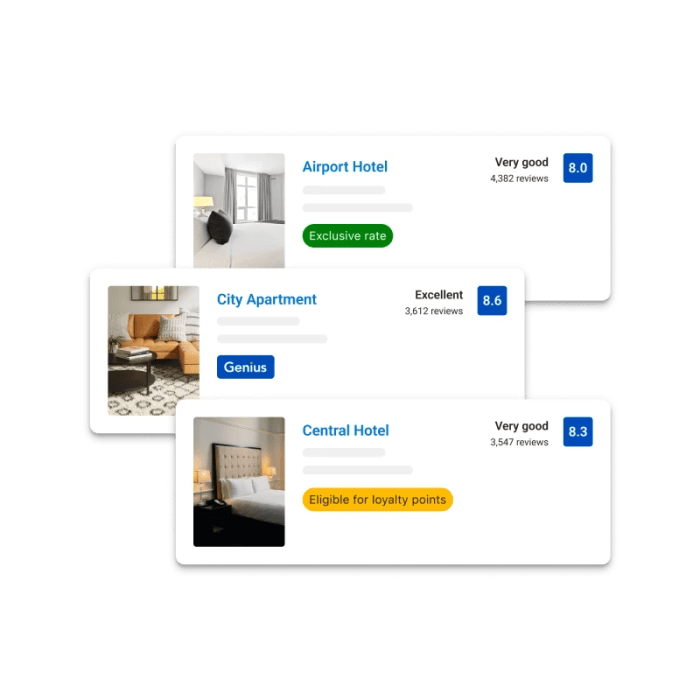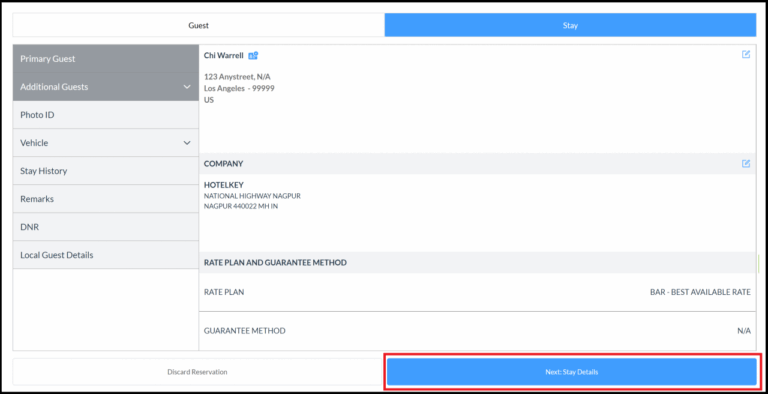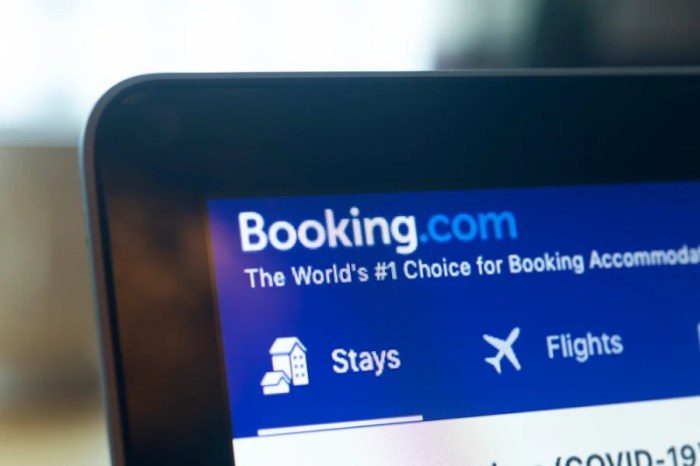Business Travel Hotel Discounts Your Guide to Savings
Business travel hotel discounts can significantly impact your bottom line. This comprehensive guide delves into various discount types, exploring corporate accounts, loyalty programs, and travel agencies. We’ll analyze the factors influencing discounts, like seasonality and competitor pricing, and provide practical methods for acquiring them, from booking portals to direct negotiation. Finally, we’ll assess the value proposition for both hotels and travelers, showing how these discounts enhance the overall experience.
From identifying the best discount types to understanding how hotels structure their programs, this guide provides a clear roadmap for maximizing your savings on business travel accommodations. We’ll cover everything from the basics of discount eligibility to advanced negotiation techniques. Learn how to uncover hidden deals and maximize your savings, ensuring you get the best possible value for your business travel.
Identifying Discount Types

Business travel often involves substantial costs, but various hotel discounts can significantly reduce expenses. Understanding these different discount types is crucial for savvy travelers and corporations alike. This section details the various avenues for securing discounted accommodations.
Corporate Account Discounts
Corporate accounts represent a significant source of revenue for hotels. These accounts often provide substantial discounts to employees or affiliated individuals.
| Discount Type | Description | Eligibility Requirements | Typical Savings |
|---|---|---|---|
| Corporate Account | Discounted room rates for employees or affiliated individuals. | Membership in a corporate travel program, usually with a contracted hotel chain. | 10-40% off standard rates, potentially more for volume bookings. |
| Group Bookings | Reduced room rates for multiple travelers. | Large group size (e.g., conferences, conventions, company events). | Often 10-25% off standard rates, depending on the number of rooms and length of stay. |
Loyalty Program Discounts
Hotel loyalty programs offer rewards for repeat stays. These programs frequently provide various discounts and perks to members.
| Discount Type | Description | Eligibility Requirements | Typical Savings |
|---|---|---|---|
| Loyalty Program | Discounted rates, exclusive offers, and other benefits for members of hotel loyalty programs. | Account registration and consistent stays at participating hotels. | 5-20% off standard rates, potentially more for elite members. |
Travel Agency Discounts
Travel agencies often negotiate special rates with hotels. These discounted rates can benefit both individual travelers and corporations.
| Discount Type | Description | Eligibility Requirements | Typical Savings |
|---|---|---|---|
| Travel Agency Discounts | Discounted rates through contracted travel agencies. | Booking through a travel agency with established agreements with hotels. | 5-15% off standard rates, potentially more for bulk bookings. |
Government/Public Sector Discounts
Government entities and public sector organizations may qualify for discounted rates. These discounts often reflect negotiated rates or bulk agreements.
| Discount Type | Description | Eligibility Requirements | Typical Savings |
|---|---|---|---|
| Government/Public Sector | Reduced room rates for government employees, public sector organizations, or institutions. | Proof of affiliation with a government agency or institution. | Potentially 10-30% off standard rates. |
Other Potential Discounts
Additional discount opportunities can arise through various channels. These may include special promotions, seasonal offers, or even online booking platforms.
| Discount Type | Description | Eligibility Requirements | Typical Savings |
|---|---|---|---|
| Special Promotions | Discounts are offered by hotels for specific events or periods. | Meeting the criteria Artikeld in the promotional offer. | Variable, ranging from 5% to significant percentages, depending on the promotion. |
Exploring Discount Programs: Business Travel Hotel Discounts
Hotel discount programs for business travelers often leverage various structures to attract and retain corporate clientele. Understanding these structures is crucial for both hotels and businesses seeking cost-effective travel solutions. These programs aim to balance profitability for the hotel with the needs of the business traveler, and their success hinges on a thoughtful approach to design and implementation.
Hotel discount programs typically employ tiered structures, offering varying levels of savings based on factors like booking volume, length of stay, and group size. These programs can be tailored to specific business segments or industries, reflecting the unique travel patterns and needs of different companies.
Common Structures of Hotel Discount Programs
Hotel discount programs often utilize tiered structures, escalating savings with increasing booking volume or group size. These programs are designed to incentivize frequent business travel and foster loyalty among corporate clients. Hotels can also offer tiered discounts based on length of stay, reflecting the cost-effectiveness of longer stays for business travelers.
Benefits and Drawbacks of Different Program Structures
Various program structures offer different advantages and disadvantages. Tiered structures, for instance, can incentivize higher booking volumes, potentially leading to increased revenue for the hotel. However, they might discourage smaller bookings, potentially losing out on incremental revenue from individual or smaller corporate clients. Conversely, flat-rate programs, while easier to manage, might not provide sufficient incentive for large corporate bookings. A well-designed program should balance the need for attracting high-volume bookings with the desire not to alienate smaller clients. The optimal structure is contingent upon the specific target market and the hotel’s overall business strategy.
Examples of Successful Discount Programs: Business travel hotel discounts
Many hotels have successfully implemented business travel discount programs. For example, some hotels partner with specific corporate travel agencies to offer exclusive discounts and amenities. Others have implemented programs that reward frequent business travelers with points redeemable for future stays or upgrades. A notable example involves a chain of hotels offering discounts based on the number of nights booked and the length of stay, motivating extended business trips. Another successful strategy is the development of tailored programs for specific industries, like the technology sector, acknowledging their unique travel patterns. Understanding the needs of different business segments allows hotels to customize their offers.
Contrasting Hotel Discount Programs
| Program Type | Features | Target Audience | Potential Drawbacks |
|---|---|---|---|
| Tiered Discount | Savings increase with booking volume or group size. | Large corporations, frequent business travelers. | May discourage smaller bookings, less attractive to individual travelers. |
| Flat Rate Discount | Fixed discount rate regardless of booking size. | All types of businesses, individual travelers. | It may not sufficiently incentivize large bookings. |
| Industry-Specific Discount | Tailored to the needs of particular industries (e.g., technology). | Businesses within the targeted industry. | Limited appeal to other industries, potential misalignment with the hotel’s overall strategy. |
| Loyalty Program | Rewards frequent travelers with points for future stays. | Frequent business travelers. | Requires a comprehensive system for managing points and rewards. |
Analyzing Factors Affecting Discounts
Understanding the factors influencing business traveler hotel discounts is crucial for both hotels and travelers. These factors are intertwined and often influence each other, creating a dynamic landscape for pricing strategies. Proper analysis allows hotels to optimize their revenue and travelers to access the most suitable deals.
Economic Factors Influencing Discounts
Economic conditions play a significant role in shaping hotel pricing. Seasonality, for example, can drastically affect demand. During peak travel seasons (e.g., major conferences, holidays), hotel occupancy rates are high, and consequently, discounts are often less prevalent. Conversely, during the off-season, hotels may offer more significant discounts to encourage bookings and fill vacant rooms. Competitor pricing also acts as a key driver. Hotels constantly monitor the pricing strategies of their competitors to ensure they remain competitive and attractive to potential guests. High demand can result in higher prices, while low demand necessitates discounts to stimulate bookings. Overall economic downturns or local economic fluctuations can also influence hotel pricing decisions, with discounts often being a strategy to maintain occupancy during challenging periods.
Impact of Occupancy Rates on Discount Strategies
Hotel occupancy rates directly dictate the need for and effectiveness of discount strategies. Low occupancy rates often signal a need for more aggressive discounts to attract bookings. Hotels employing effective revenue management strategies can predict future occupancy levels and adjust their pricing accordingly. This might involve offering various discount tiers based on the projected occupancy, with higher discounts for lower occupancy periods. Conversely, high occupancy rates can justify higher prices, with discounts potentially only offered as incentives for specific booking segments or to secure early bookings. The correlation between occupancy rates and discount strategies is crucial for maximizing revenue and minimizing financial losses.
Negotiation Strategies and Discounts
Negotiation strategies play a vital role in securing favorable business travel hotel discounts. Large corporations and organizations frequently negotiate contracts with hotels for bulk bookings, often leading to substantial discounts. These negotiations consider factors such as the length of stay, number of rooms, and expected group size. The negotiating party’s understanding of the hotel’s revenue management strategies can influence the final negotiated discount. Hotels might offer more attractive discounts for large groups or extended stays to secure a higher volume of bookings. Individual travelers can also negotiate for discounts, especially during periods of low demand or when booking through a travel agent or a company that has established relationships with the hotels.
Hotel Revenue Management Strategies for Discounts
Hotels utilize various revenue management strategies to offer discounts effectively. Dynamic pricing is a common approach where prices adjust based on real-time demand, occupancy rates, and competitor pricing. This allows hotels to offer discounts when demand is low and maintain higher prices during peak periods. Yield management is another strategy that involves setting different prices for different customer segments and booking windows. Hotels can offer discounts to incentivize bookings made well in advance or to target specific business traveler groups. Incentivized booking programs are also utilized, where early booking discounts or discounts for a specific length of stay can incentivize travelers to book their stay in advance. Furthermore, loyalty programs can reward frequent business travelers with exclusive discounts and special offers.
Investigating Discount Acquisition Methods

Securing favorable hotel rates is crucial for business travelers. Effective strategies for acquiring discounts can significantly impact overall travel costs. This section explores the various methods available and offers insights into maximizing savings.
Different avenues exist for obtaining hotel discounts, each with its own set of advantages and disadvantages. Understanding these nuances empowers travelers to choose the most appropriate approach for their specific needs and circumstances.
Booking Portals: A Comparative Analysis
Booking portals offer a centralized platform for comparing rates across multiple hotels. This allows travelers to quickly identify potential discounts.
- Pros: Wide selection of hotels, often with competitive rates and deals; convenient one-stop comparison tool; often includes filters for specific needs, such as amenities or location; potentially uncovers hidden deals.
- Cons: Not all portals offer exclusive deals; some portals might have hidden fees or surcharges; competition among portals can lead to varying rates.
Direct Booking: Maximizing Savings Potentially
Booking directly with the hotel can sometimes lead to better deals than through intermediaries. Hotels frequently offer discounts to corporate clients or loyal customers.
- Pros: Potentially lower rates, especially for frequent guests; direct communication with the hotel for any special requests or needs; often includes exclusive perks like complimentary amenities.
- Cons: Requires more effort to compare rates across different hotels; might not always be the cheapest option; less access to immediate deals compared to booking portals.
Travel Agents: Navigating the Landscape of Hotel Discounts
Travel agents can be valuable resources for business travelers, offering expertise and negotiating skills to find suitable discounts.
- Pros: Expertise in navigating the complex landscape of hotel discounts; negotiation power to secure better rates for bulk bookings; personalized service and attention to specific requirements; potentially access exclusive deals.
- Cons: Fees charged by the agent; might not be the most cost-effective option for individual bookings; not always necessary for simple bookings.
Uncovering Hidden Discounts and Deals
Numerous strategies can help unlock hidden discounts. Diligent research and proactive engagement can uncover hidden savings.
- Checking for corporate accounts: Many hotels offer discounts to businesses with corporate accounts. This often results in better rates.
- Utilizing loyalty programs: Frequent travelers can often earn points or rewards that translate into discounted stays.
- Exploring off-season travel: Visiting during the off-season can often lead to significantly lower prices while still providing a worthwhile experience.
- Booking last minute: Sometimes, last-minute bookings can result in discounted rates as hotels try to fill empty rooms.
A Step-by-Step Guide to Maximizing Savings
A structured approach to finding discounts can significantly reduce travel costs. A systematic process can help business travelers make informed decisions.
- Identify travel dates and destination: Clearly define travel dates and desired location to narrow down options.
- Compare rates on multiple booking portals: Utilize different booking portals to compare rates and identify potential discounts.
- Check for corporate or loyalty program discounts: Evaluate if any corporate accounts or loyalty programs can provide better rates.
- Contact hotels directly to inquire about special offers: Directly contacting hotels can uncover deals or discounts that might not be visible on booking portals.
- Consider travel agents for specialized needs: Engage travel agents for complex itineraries or group bookings to leverage their negotiation skills.
- Monitor for last-minute deals and off-season offers: Regularly check for deals and promotions to optimize cost savings.
Assessing the Value Proposition of Discounts
Business travel hotel discounts represent a complex interplay of benefits for both hotels and travelers. Understanding the nuances of this exchange is crucial for optimizing both the traveler experience and the profitability of the hotel. This section delves into the value proposition, exploring the advantages and disadvantages for each party.
A balanced perspective on the value proposition acknowledges that discounts, while seemingly advantageous, can have unforeseen consequences. The success of a discount program hinges on the careful evaluation of its impact on both the traveler’s experience and the hotel’s bottom line. This requires considering various factors, including the type of discount, the program’s design, and the overall market conditions.
Value Proposition for Hotels
Hotels offer discounts to attract bookings, stimulate demand, and potentially increase occupancy rates. This strategy can be particularly beneficial during periods of lower demand. However, discounted rates may reduce overall revenue if not managed effectively. Careful analysis of the cost of providing the discounted service and potential loss of revenue must be undertaken to ensure that the program remains profitable.
Value Proposition for Travelers
Travelers benefit from discounted rates by saving money on accommodations. This financial incentive can be a powerful motivator for choosing a particular hotel. However, the value of the discount should be weighed against factors such as the quality of the hotel, the location, and the overall experience. A significant discount might not always translate to a superior experience.
Comparing Discount Program Value to the Traveler
Understanding how different discount programs impact the traveler experience is crucial for informed decision-making. The following table compares the value proposition of several common discount programs.
| Discount Program | Potential Value to the Traveler | Potential Drawbacks for the Traveler |
|---|---|---|
| Loyalty Programs | Accumulated points can lead to significant savings, often including free nights, upgrades, and other perks. Frequent travelers benefit greatly from consistent savings. | Requires commitment to consistent use of the program to maximize benefits. It may not be worth the effort for occasional travelers. |
| Corporate Rate Programs | Can result in substantial savings for businesses and their employees, particularly for extended stays. May include access to special amenities and services. | Often requires a minimum stay or a set number of rooms booked. It may not apply to personal travel. |
| Group Discounts | Can offer substantial savings when traveling with a group. This can be especially beneficial for conferences, events, or family vacations. | May have specific restrictions on group size, dates, or room types. Flexibility can be limited. |
| Promotional Discounts (e.g., flash sales) | Can yield significant savings on last-minute or off-peak travel. Offers quick opportunities to save money. | Limited availability and often shorter booking windows. Travel flexibility may be compromised. |
Enhancing the Traveler Experience with Discounts
Discounts can enhance the traveler experience by reducing the financial barrier to entry, allowing more people to explore new destinations. This can lead to increased tourism and economic activity in the destinations. Strategic use of discounts can drive positive brand perception and loyalty, particularly if the discounts are tied to high-quality service and amenities.
Evaluating Discount Effectiveness
Understanding the impact of business travel hotel discounts is crucial for optimizing revenue and enhancing customer satisfaction. A well-designed discount program can attract new clients and retain existing ones, while a poorly executed program can result in lost revenue and frustrated clientele. Assessing the effectiveness of these programs requires a multifaceted approach that considers various factors, from customer response to financial returns.
Evaluating the effectiveness of discount programs goes beyond simply observing a rise or fall in bookings. It demands a comprehensive analysis of the program’s impact on various key performance indicators (KPIs) across the entire hotel operation, from sales and marketing to revenue management and customer service. This evaluation process should include measuring the return on investment (ROI) and considering the long-term impact on brand perception and customer loyalty.
Examples of Successful Discount Programs and Measurable Outcomes
Successful discount programs often exhibit demonstrable positive outcomes. For example, a hotel chain offering a loyalty program with tiered discounts based on booking frequency saw a 15% increase in repeat bookings within the first year. Another hotel implemented a special weekend discount for business travelers, leading to a 20% boost in weekend occupancy rates. These examples highlight the tangible benefits of well-executed discount strategies. Quantifiable results, like these, are crucial for demonstrating the value of discount programs to stakeholders.
How Hotels Measure the Effectiveness of Discount Strategies
Hotels employ various methods to assess the effectiveness of their discount strategies. A common approach involves tracking key metrics like revenue generated, customer acquisition costs, and average revenue per available room (ARPA). Furthermore, analyzing customer demographics and booking patterns can provide insights into the types of customers responding to specific discounts. Data from customer feedback surveys can offer valuable insights into the overall customer experience, which can directly correlate to the perceived value of the discount.
Metrics for Evaluating the Success of Business Travel Hotel Discounts
A range of metrics is crucial for evaluating the effectiveness of business travel hotel discounts. These metrics can be categorized as follows:
- Revenue Metrics: Increased revenue per room night, growth in total revenue, and improved occupancy rates are essential indicators. An increase in direct bookings as a result of the discount program also reflects its effectiveness. For instance, a 10% increase in direct bookings after implementing a corporate discount program is a positive sign.
- Customer Metrics: Repeat bookings, customer satisfaction scores (CSAT), and customer lifetime value (CLTV) provide insights into customer loyalty and satisfaction. Improved customer retention, demonstrated by a 5% increase in returning customers, is a positive indicator of a successful discount program.
- Operational Metrics: Reduced staff workload related to booking inquiries or a decrease in no-shows after implementing a discount can be considered positive indicators. Tracking the efficiency of reservation processes and the number of inquiries can also be a factor.
Providing Examples of How Hotels Can Track the ROI of Their Discount Programs
Tracking the return on investment (ROI) for discount programs is vital. A hotel can calculate ROI by dividing the net profit from the discount program by the total cost of the program. For example, if a hotel spent $10,000 on a marketing campaign for a business travel discount and generated $20,000 in additional revenue, the ROI would be 100%.
| Discount Type | Cost | Revenue Generated | ROI |
|---|---|---|---|
| Corporate Discount | $5,000 | $15,000 | 200% |
| Loyalty Program | $8,000 | $16,000 | 100% |
Furthermore, hotels can track the profitability of different discount segments, allowing them to optimize pricing strategies and maximize revenue.
Strategies for Maximizing Savings

Source: paxes.com
Leveraging various strategies can significantly reduce the cost of business travel accommodations. This involves exploring beyond standard discounts and actively engaging in negotiation to secure the most favorable rates. A systematic approach to maximizing savings is crucial for cost-effective travel planning.
Maximizing savings on business travel hotel accommodations requires a proactive and multifaceted approach. It’s not just about finding a discount; it’s about finding the best possible discount tailored to your specific needs and travel patterns. By combining knowledge of available programs with strategic negotiation tactics, substantial savings are achievable.
Techniques for Maximizing Savings Beyond Standard Programs
Understanding the intricacies of hotel discount programs is essential. However, opportunities exist beyond these readily available avenues. Researching and leveraging alternative discounts, such as loyalty programs of related businesses or industry-specific partnerships, can yield additional savings. Often, these hidden gems can offer significant advantages.
- Exploring Alternative Discount Sources: Look beyond the hotel’s programs. Corporate partnerships, industry associations, or even credit card rewards programs may offer discounted rates or perks. For example, a company that often travels to specific conferences could explore potential discounts through the conference organizers or relevant associations.
- Utilizing Travel Agent Networks: A travel agent can often access exclusive rates and deals that aren’t publicly advertised. They can also provide valuable insight into dynamic pricing and potential fluctuations in rates.
- Leveraging Online Travel Agencies (OTAs): While OTAs are often associated with standard programs, comparing prices across multiple OTAs, including those specialized in business travel, can uncover hidden discounts.
Negotiating Discounts with Hotels
Successful negotiation hinges on a strategic approach. Knowing when and how to negotiate effectively can significantly impact the final price.
- Timing is Key: Negotiating during off-peak seasons or weekdays often yields better results. Requesting a discount during periods of low demand can increase your chances of securing a favorable rate.
- Highlighting Your Volume: If you’re booking multiple rooms or frequently using the hotel, emphasizing your volume and potential future bookings can lead to significant discounts.
- Presenting Alternatives: If a hotel’s initial quote doesn’t meet your needs, present alternative booking options. This allows for a more flexible and potentially beneficial discussion.
- Being Prepared to Walk Away: The ability to walk away from a deal demonstrates your negotiating power. If the hotel is not willing to meet your needs, consider alternatives.
Comprehensive Approach to Maximizing Business Travel Hotel Discounts
A structured approach is vital to consistently securing the best possible deals.
- Research Available Discounts: Thoroughly investigate all potential discount programs offered by the hotel, corporate partnerships, and other relevant sources. This includes examining loyalty programs, group discounts, and any special offers.
- Identify Negotiation Opportunities: Evaluate the hotel’s current pricing structure and identify potential negotiation points. Analyze factors such as seasonality, demand, and your booking volume.
- Develop a Negotiation Strategy: Formulate a clear strategy outlining your desired discount, preferred dates, and alternatives if necessary. This strategy should be flexible enough to adapt to changing circumstances.
- Contact the Hotel Directly: Reach out to the hotel directly and politely request a discount. Be prepared to justify your request based on factors like volume, loyalty, or anticipated future bookings.
- Follow Up and Monitor: After initiating contact, follow up with the hotel to ensure your request is being processed. Continuously monitor the progress of your negotiation and be prepared to make further adjustments as needed.
Illustrating Discount Programs in Action

Hotel discount programs for business travelers are a vital component of attracting and retaining clientele. These programs often offer significant financial advantages, but their effectiveness depends on careful design and implementation. Understanding how these programs function in practice is key to maximizing their benefits and ensuring alignment with overall business objectives.
Common Business Traveler Discount Programs
Various programs cater to the needs of business travelers, offering different benefits and conditions. Understanding the nuances of each program is crucial for strategic planning.
- Corporate Rate Programs: These programs provide discounted rates to employees of a specific company or organization. A key benefit is the predictable cost savings for the company. Drawbacks can include restrictions on booking dates, specific hotels within a chain, or limited availability. For example, a large tech firm might negotiate a corporate rate with a chain of hotels in major cities. This would ensure its employees have access to discounted rooms when traveling for business, while providing the hotel with a predictable stream of revenue.
- Frequent Traveler Programs: These programs reward loyalty by offering discounted rates or points accumulation for repeated stays. The benefit is clear: increased customer retention and brand loyalty. Drawbacks could include the need for consistent travel patterns to earn meaningful discounts. A frequent business traveler might join a hotel’s loyalty program to accumulate points for free nights, upgrades, or other benefits. This creates a mutually beneficial relationship where the traveler gets rewards, and the hotel retains the customer.
- Group Discount Programs: These are typically for large conferences, conventions, or company-sponsored events. The advantage is substantial cost savings for large groups. Drawbacks can include strict booking lead times and limited room block availability. For example, a medical association might book a block of rooms at a convention center hotel for their annual conference. This provides the association with substantial savings on rooms for the event attendees.
- Military Discount Programs: These programs offer discounts to active-duty military personnel, veterans, and their families. The advantage is supporting the community and attracting a segment of travelers who may have specific needs. Drawbacks might be limited availability or eligibility criteria. For example, a hotel might partner with local military bases to offer discounts to personnel staying overnight for business or personal reasons.
Program Details and Summary
To illustrate the varying elements of these programs, here’s a table summarizing key features:
| Program Type | Description | Benefits | Drawbacks | Example |
|---|---|---|---|---|
| Corporate Rate | Discounted rates for company employees | Predictable costs, employee satisfaction | Potential restrictions on booking dates, hotels, and availability | XYZ Corporation negotiates a 15% discount on rooms at the Hilton chain. |
| Frequent Traveler | Rewards program for repeat stays | Points accumulation, potential upgrades, and free nights | Requires consistent travel, may not offer immediate discounts | A frequent business traveler earns points for free nights through the Marriott Bonvoy program. |
| Group Discount | Discounts for large gatherings | Significant cost savings for large groups | Strict booking lead times, limited room block availability | A university books 500 rooms for a conference, receiving a 20% discount. |
| Military Discount | Discounts for active-duty military and veterans | Community support, potential for attracting a segment of travelers | Limited availability, eligibility criteria | A veteran receives a 10% discount at a local hotel. |
Last Recap
In conclusion, securing business travel hotel discounts requires a strategic approach. By understanding the different discount types, programs, and influencing factors, you can significantly reduce your travel expenses. This guide provides a comprehensive resource for maximizing savings through various methods, from leveraging corporate accounts to mastering negotiation strategies. Ultimately, maximizing savings on business travel hotels is achievable with the right knowledge and a proactive approach. Enjoy the benefits of cost-effective travel while enhancing your overall experience.





